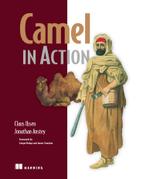Book Description
Apache Camel is a Java framework that lets you implement the standard enterprise integration patterns in a few lines of code. With a concise but sophisticated DSL you snap integration logic into your app, Lego-style, using Java, XML, or Scala. Camel supports over 80 common transports such as HTTP, REST, JMS, and Web Services. Camel in Action is a Camel tutorial full of small examples showing how to work with the integration patterns. It starts with core concepts like sending, receiving, routing, and transforming data. It then shows you the entire lifecycle and goes in depth on how to test, deal with errors, scale, deploy, and even monitor your app— details you can find only in the Camel code itself. Written by the developers of Camel, this book distills their experience and practical insights so that you can tackle integration tasks like a pro. What’s Inside • Valuable examples in Java and XML • Explanations of complex patterns • Error handling, testing, deploying, managing, and running Camel • Accessible to beginners, useful to experts
Table of Contents
- Copyright
- Dedication
- Brief Table of Contents
- Table of Contents
- Foreword
- Foreword
- Preface
- Acknowledgments
- About this Book
- About the Cover Illustration
- About the Authors
- Part 1. First steps
- Chapter 1. Meeting Camel
- Chapter 2. Routing with Camel
- Part 2. Core Camel
- Chapter 3. Transforming data with Camel
- Chapter 4. Using beans with Camel
- Chapter 5. Error handling
- Chapter 6. Testing with Camel
- Chapter 7. Understanding components
- Chapter 8. Enterprise integration patterns
- Part 3. Out in the wild
- Chapter 9. Using transactions
- Chapter 10. Concurrency and scalability
- Chapter 11. Developing Camel projects
- Chapter 12. Management and monitoring
- Chapter 13. Running and deploying Camel
- Chapter 14. Bean routing and remoting
- Appendix A. Simple, the expression language
- Appendix B. Expressions and predicates
- Appendix C. The producer and consumer templates
- Appendix D. The Camel community
- Appendix E. Akka and Camel
- Index
- List of Figures
- List of Tables
- List of Listings
